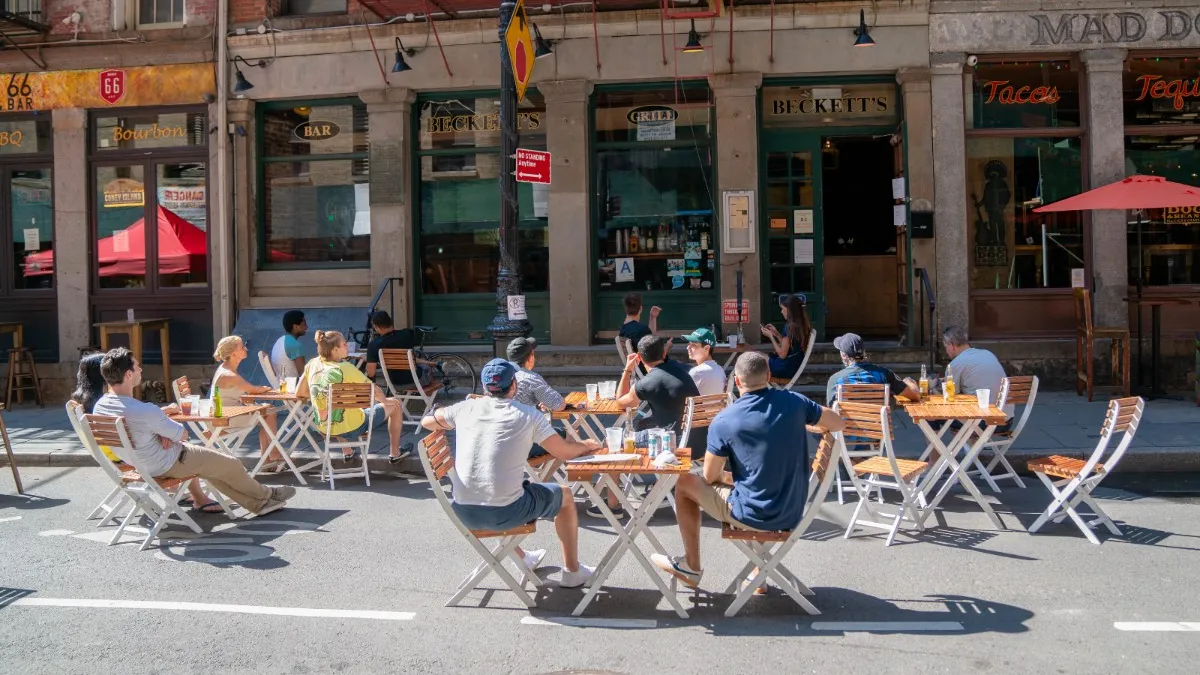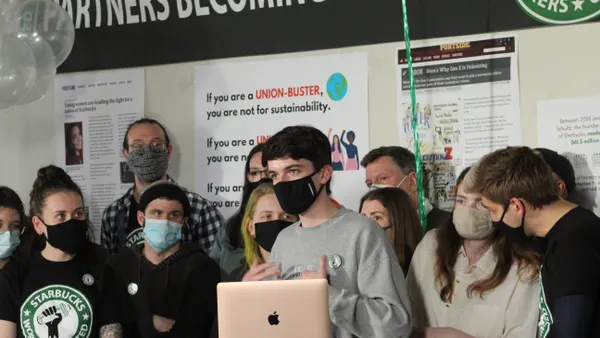UPDATE, Dec. 10, 2020: L.A County Superior Court Judge James Chalfant ruled Tuesday that Los Angeles County didn't provide evidence to why it felt outdoor dining was a greater risk to spreading coronavirus when it banned the practice in November, according to the Associated Press. He also said the county didn't show how health benefits outweighed the potential adverse impact to the economy. The judge, who called the ban "arbitrary," said outdoor dining will be limited to three weeks and expires Dec. 16, at which point the Department of Public Health will need to provide a risk-benefit analysis before it is extended. The ruling does not supersede Gov. Gavin Newsom's shutdown actions that were based on ICU capacity levels falling below 15%, which is currently in effect until at least Dec. 27.
Dive Brief:
- A judge in Los Angeles County said officials must prove a link between outdoor dining and the increase in local coronavirus cases in order for the ban on outdoor dining in the county to be upheld. Los Angeles County's ban on outdoor dining went into effect the last week and has been met with plenty of pushback, including from the California Restaurant Association, which filed a lawsuit to reverse the ban.
- CRA President and CEO Jot Condie called the order "arbitrary" in a statement posted on Twitter and maintained that it unfairly targeted restaurants without supporting evidence. The court's decision on the outdoor ban is expected next week, but a ruling in favor of outdoor dining will not supersede a regional stay-at-home order announced Thursday.
- While officials present evidence in support of an outdoor dining ban, the L.A. County Development Authority has created a program to grant $30,000 to restaurants ordered to close that channel. To qualify, restaurants must be a full-service, permanent restaurant that opened on or before March 4 and employ fewer than 25 people. Restaurants must be located within Los Angeles County, but not within the cities of Los Angeles or Pasadena.
Dive Insight:
In Los Angeles County, the positivity rate is now around 13%, versus 3.1% on Nov. 1, while average daily deaths are up 92% since early November, according to Nation's Restaurant News. This dramatic escalation is no doubt the impetus behind the decision to place a ban on outdoor dining, but the decision still may come as a bit of a surprise considering California's temperate climate and the lack of definitive data correlating rising cases with outdoor dining specifically.
In September, the CDC reported a correlation between adults who tested positive for COVID-19 and those who reported dining at a restaurant two weeks prior. However, the CDC's assessment did not make clear if study participants ate inside restaurant dining rooms or on patios, and did not distinguish risk factors between indoor and outdoor dining. Some infectious disease experts have said outdoor spaces with more ventilation are safer, but Dr. George Rutherford, head of the division of infectious disease and epidemiology at University of California San Francisco, told the San Francisco Chronicle that going out to dinner is one of the highest risk activities, regardless of whether or not it is indoors or outdoors.
For his decision, L.A. County Superior Court Judge James Chalfant requested data on hospital capacity and intensive care beds to support the county's claim that the healthcare system would be overwhelmed without an outdoor dining ban, according to the Los Angeles Times. He is also asking for an explanation as to why the county is taking a separate approach from Governor Gavin Newsom's "state reopening blueprint," which permits outdoor dining.
The next hearing is scheduled for Dec. 8, giving Los Angeles health officials a week to show data-driven support for why local restaurants should cease outdoor dining service. Even if the judge finds these results unsatisfactory, however, the state's regional shutdown orders may make it a moot point.
Los Angeles County's outdoor ban is for a minimum of three weeks, but several operators assume that period will be extended, which could be a death knell without more support. Some operators are openly defying the outdoor dining shutdown, though that could result in fines or other penalties.
The county's $30,000 grants could no doubt provide a bit of a lifeline, but requirements are so specific that recipients will be limited. Eater LA reports that Los Angeles and Pasadena, which don't qualify for the grant program, may be given their own grant programs. The question now is whether or not that grant money can sustain restaurants for the next three weeks and, potentially, beyond.









